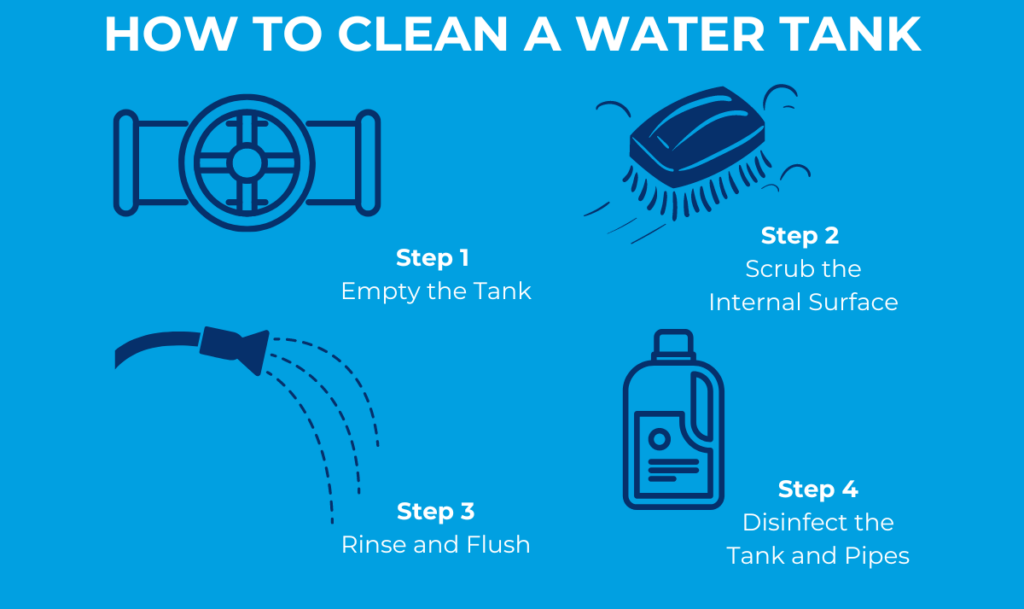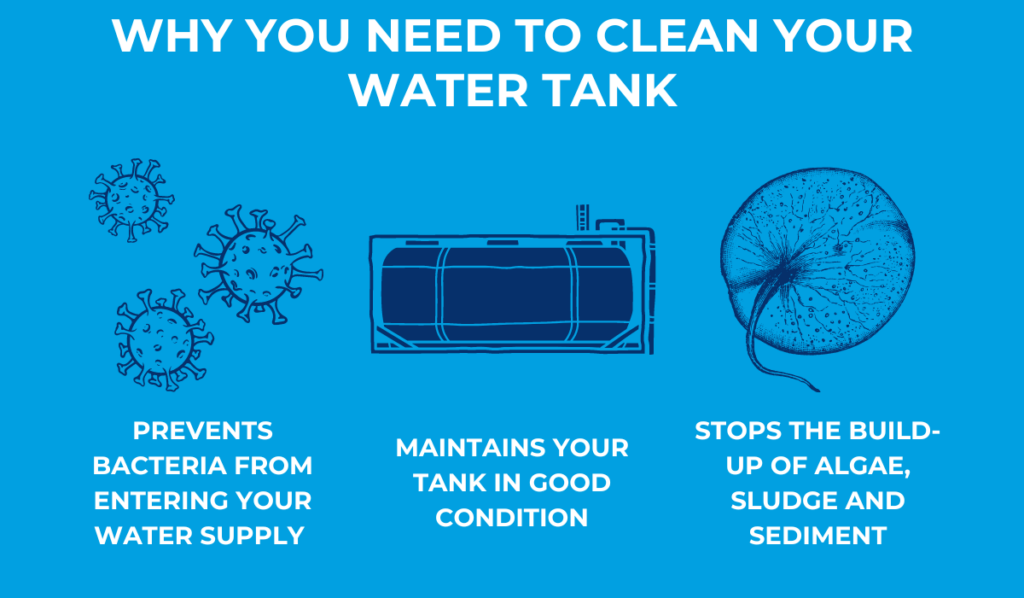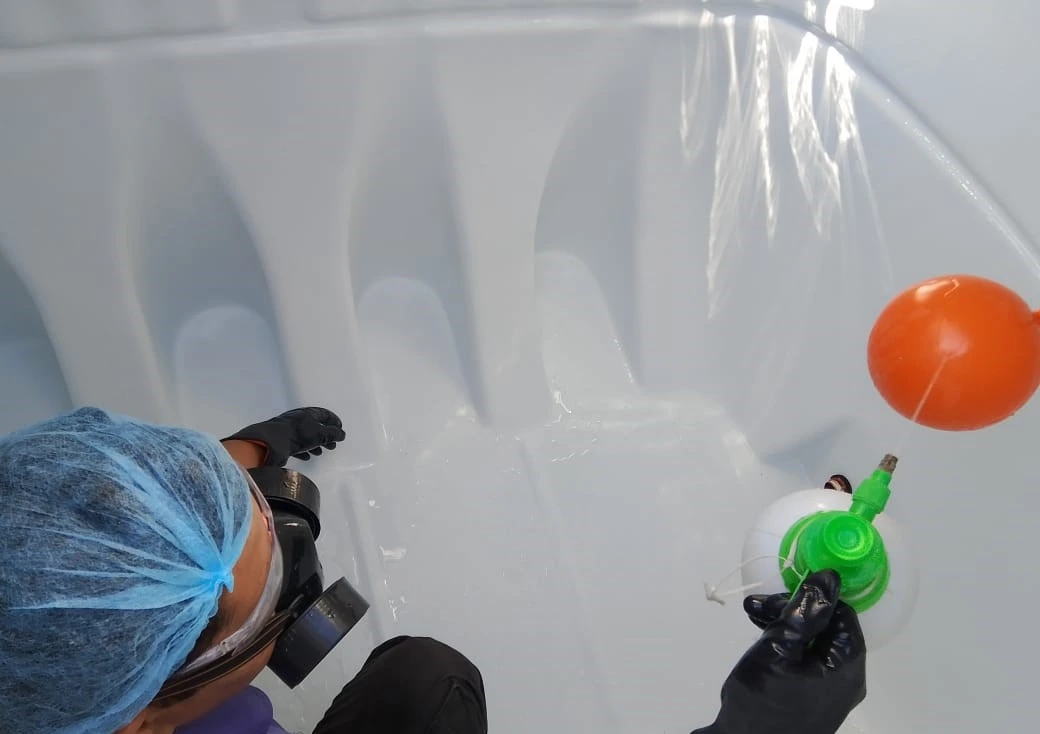Your Complete Guide to Water Tank Cleaning
Looking to learn everything about water tank cleaning? You’re in the right spot!
Proper and high-quality water storage is crucial for maintaining water used in distribution networks, as well as for residential and commercial needs. This is especially true for potable water.
Many external factors affect the condition of your water tank, making regular cleaning vital to ensure your water supply remains safe for use.
Our comprehensive guide includes information on how to clean a water tank, the importance of regular maintenance, and the advantages of hiring a professional for the job.

How to Clean a Water Tank – Step by Step
How do you clean a water tank? While the process is relatively straightforward, it's important to ensure that the person carrying out the cleaning is trained and equipped with the appropriate tools.
Here are some key considerations for your water tank maintenance:
- The size of your tank
- The equipment you have on hand
- Your overall knowledge of water tanks
If you have a standard or small barrel-sized tank and only need to remove dirt and grime, you can likely clean it using a simple garden hose.
However, if you suspect the presence of harmful bacteria in your water tank, specialized equipment and expertise may be necessary for proper cleaning.
Generally, it’s recommended to clean your tank every six months to minimize the risk of bacterial growth.
When cleaning a water tank, you should follow these steps:
Step 1 – Empty the Tank
Start by draining your water tank to facilitate effective cleaning. Turn off the valve connected to the distribution line and open the outlet valve to remove as much water as possible.
Step 2 – Scrub the Internal Surface of the Tank
Once the tank is emptied, prepare a mixture of detergent or bleach and hot water. Depending on your tank's size and accessibility, use a brush or a high-pressure jet to scrub the internal surfaces, ensuring you clean every corner and crevice to eliminate any lingering bacteria. Allow the mixture to sit for at least two hours. Note: Internal cleaning should only be performed by qualified individuals using appropriate safety gear.
Step 3 – Rinse and Flush
After the mixture has had time to kill any bacteria, rinse the tank thoroughly with clean water. A high-pressure hose or water jet works best for this. Continue rinsing until clear water flows from the outlet. If you lack the necessary equipment, fill the tank with hot water, let it sit for a few hours, then drain it for safe disposal.
Step 4 – Disinfect the Tank and Pipes
For disinfection, use an antibacterial spray or liquid bleach. The general guideline is to use 5ml of bleach for every litre of water in your tank. Open the valve to the distribution line and run water from all taps until you can detect the smell of bleach, ensuring all pipes and taps are sterilized. Let the bleach sit for at least four hours before draining the tank again and flushing the entire system.
Since this cleaning process involves working in confined spaces, it can be hazardous. If you lack the necessary skills or equipment, it’s advisable to hire a professional to clean your water tank safely.
Why is Water Tank Cleaning Important?

Cleaning your water tank is essential for several reasons, not just for the quality of the stored water but also for the condition of the tank itself.
Water storage tanks are commonly found in various modern environments, including businesses, hospitals, and educational institutions.
Over time, all water tanks become vulnerable to corrosion, which can be hard to detect. This damage may manifest as microcracks, allowing bacteria and mold to enter the tank.
Additionally, the buildup of algae, sludge, and sediment promotes bacterial growth by providing a food source. If not cleaned regularly, these accumulations can impact the internal components of your system.
This neglect can lead to unpleasant odors and tastes, potentially resulting in serious health issues if left unattended.
While cleaning your water tank won't prevent natural wear and tear, it does stop bacteria from proliferating, ensuring your water supply remains safe.
Legionnaires' Disease
One serious consequence of consuming contaminated water is Legionnaires' disease. While it is relatively rare, this illness can be quite severe.
Patients often require hospitalization because the infection primarily targets the lungs, sometimes necessitating alternative breathing support. Treatment typically involves administering antibiotics intravenously, which can last from one to three weeks.
Symptoms of Legionnaires' disease may include difficulty breathing, coughing, fever, chest pain, and other flu-like symptoms.
Why Should You Hire a Professional?
As noted earlier, cleaning your water tank can be quite unfamiliar if you're not experienced. This is why it's essential to hire a professional. An experienced technician will possess the right tools and knowledge to carry out the job more effectively.
Additionally, health and safety are important factors to consider. Water tanks are often large and may be situated in elevated locations, which means you may need extendable ladders and expertise in working at heights.



